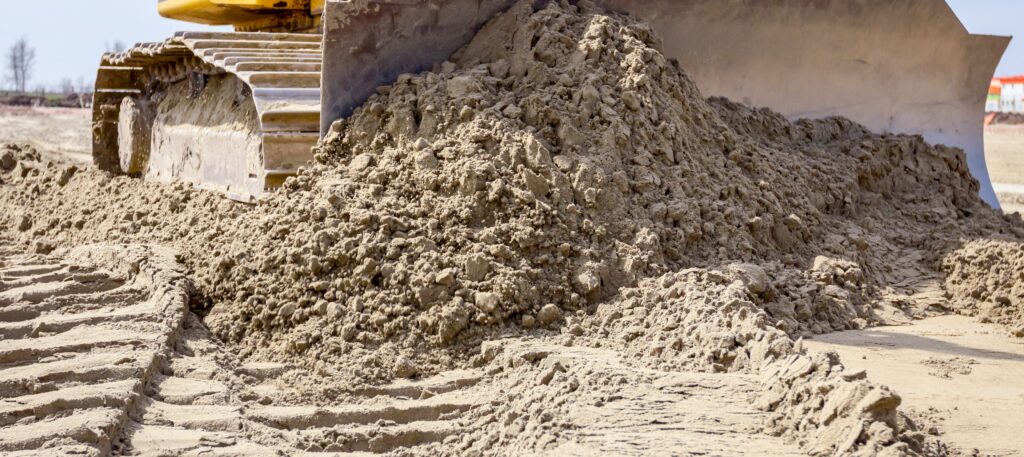Blog written by Used Equipment Inspector, Jay Marshall. Jay has been with Finning for more than 35 years
In my first post, I discussed estimating undercarriage conditions on excavators. The trick is to judge track wear by looking at the position of the front idler in the track frame: the further extended the idler, the more worn the tracks are. In this blog, I’d like to further calibrate your thumb and give you some tips for estimating undercarriage wear on bulldozers.
Excavators are relatively easy to judge as we’re mostly looking for internal pin & bushing wear, or track stretch. However, external bushing wear is usually the leading wear point on bulldozers, making them harder to estimate; it’s easy to look at a bulldozer and judge the tracks to be in good shape when that’s not the case. In fact, after taking some example pictures, this article itself turned out to be a case study—I’ll explain later.
Bushing wear on bulldozers: a primary (and potentially costly) area of concern
First, a bit about bushing wear. This is the wear on the lower side of the track bushings caused by contact with the drive sprockets. In theory, the bushings should wear at the same rate as the sprockets, allowing you to gauge the bushing wear by how the sprockets look. In some cases, this is true, but this is where things can get tricky. In many instances, the sprockets will wear much faster than the bushings. You might estimate the tracks to be heavily worn but in fact, just the less expensive sprockets need replacing. Conversely, the sprockets may look near new, but the bushings are heavily worn. In this case, the more expensive track rails need service or replacement.
Many factors affect this wear ratio between sprockets and track bushings including machine type, application, abrasive conditions, undercarriage brand, and more. This is why it’s crucial to look at the bushings themselves and not just the sprockets when estimating bulldozer undercarriage wear.
Tip #1: To check your bushings, you will need to assess them visually or by feel. View the track bushings by examining the underside of the track rail, this may require some contorting, and determine how much wear is showing on the bottom side of each bushing. As you get experience visually observing bushing wear, you can also practice “feeling” the bushings. For reference, the top sides of bushings are hard to see but they are usually new—over time your fingers will learn the difference between new and worn bushings.
How much wear is too much?
Once your eye, and touch, is calibrated to identify bushings in good condition, the question becomes how much wear is too much wear? Luckily the answer is simple and that brings us to the second tip.
Tip #2: If you can see or feel significant wear then the bushings are considered worn. At this point you should replace them, as left too long they will eventually crack and fail, rendering the machine inoperable. Addressing worn bushings means at minimum swapping the pads to new rails and replacing the worn sprockets.
Once you have a good read on the bushing condition, look at the state of the other undercarriage components: the rollers, idlers, track shoes, and sprockets. They all work together as part of a system, and all have costs associated with them. It’s important to stay on top of their wear, however, don’t lose sight of the bushings which are the primary area of concern and the largest single-cost item.
Below are pictures of used bushings, notice how they are worn and dished in the middle: once thin enough they will eventually crack or shatter. Keep in mind, on larger dozers a second life can be gained from the track chain by rotating the bushings. Talking to your local dealer’s Undercarriage Specialist is a great resource to learn about the optimal time to do so! However, don’t delay bushing replacement when required, as it can save you from an inoperable machine.
An example tractor: Cat D6K
Concluding with our example used tractor or dozer, a D6K in a local yard looked like a good candidate for pictures of healthy undercarriage; from a distance, the pads & sprockets looked to be in great shape. However, when I looked up under the rails to take pictures of the bushings, I found that they showed significant wear and were approaching a bushing turn. This would have been an easy and expensive oversight if I’d only judged the undercarriage condition based on the pad & sprocket condition—and a lesson to keep in mind when you’re estimating your own dozer’s external bushing wear.
The tractor undercarriage appears to be in very good condition (left). It has good track shoes and good sprockets (right).

